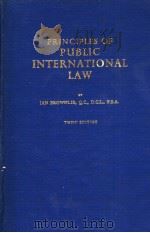《SOURCEBOOK ON PUBLIC INTERNATIONAL LAW》
| 作者 | 编者 |
|---|---|
| 出版 | CAVENDISH PUBLISHING LIMITED |
| 参考页数 | 883 |
| 出版时间 | 1998(求助前请核对) 目录预览 |
| ISBN号 | 1859410502 — 求助条款 |
| PDF编号 | 812894628(仅供预览,未存储实际文件) |
| 求助格式 | 扫描PDF(若分多册发行,每次仅能受理1册) |
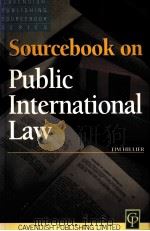
1INTRODUCTION1
1.1 HISTORICAL DEVELOPMENT2
1.2DEFINITIONS AND THE NATURE OF PUBLIC INTERNATIONAL LAW5
1.2.1 The traditional view9
1.2.2 The modern view10
1.2.3 Contemporary theories11
1.3 IS INTERNATIONAL LAW REALLY LAW?20
1.4THE ENFORCEMENT OF INTERNATIONAL LAW30
1.4.1 The United Nations30
1.4.2 Judicial enforcement30
1.4.3 Loss of legal rights and privileges30
1.4.4 Self-help31
2THE RELATIONSHIP BETWEEN MUNICIPAL LAW AND INTERNATIONAL LAW33
2.1 INTRODUCTION33
2.2THE THEORETICAL ISSUE33
2.2.1 Monism34
2.2.2 Dualism35
2.2.3 A third way?35
2.3THE PRACTICAL ISSUE38
2.3.1 Municipal law before international tribunal38
2.3.3International law in municipal courts39
2.3.3.1 Transformation and incorporation39
2.3.3.2 British practice40
2.3.3.3 The practice of other states45
2.3.4 The relationship between international law and European law46
2.3.5 The relationship between regional international law and universal international law57
3SOURCES OF INTERNATIONAL LAW59
3.1 INTRODUCTION59
3.2 ARTICLE 38 OF THE STATUTE OF THE INTERNATIONAL COURT OF JUSTICE63
3.3 TREATIES64
3.4CUSTOM65
3.4.1 Definitions of international custom66
3.4.2The material element71
3.4.2.1 State practice71
3.4.2.2 The extent of the practice73
3.4.2.3 The practice of dissenting states and persistent objectors74
3.4.2.4 Duration of practice74
3.4.3 The psychological element75
3.4.4 Treaties as evidence of customary law83
3.5GENERAL PRINCIPLES OF LAW83
3.5.1 Some examples92
3.5.2 Equity93
3.6 JUDICIAL DECISIONS93
3.7 THE TEACHINGS OF THE MOST HIGHLY QUALIFIED PUBLICISTS OF THE VARIOUS NATIONS94
3.8 OTHER POSSIBLE SOURCES95
3.9 RESOLUTIONS OF HMTERNATIONAL ORGANISATIONS95
3.10 RESOLUTIONS OF REGIONAL ORGANISATIONS98
3.11 THE INTERNATIONAL LAW COMMISSION AND CODIFICATION98
3.12 'SOFT LAW99
3.13 JUS COGENS OR PEREMPTORY NORMS100
4THE LAW OF TREATIES103
4.1 INTRODUCTION103
4.2DEFINITIONS125
4.2.1 Unilateral agreements126
4.2.2 Subjects of international law127
4.2.3 An intention to produce legal effects130
4.2.4 Legal effects under public international law130
4.2.5 Designation131
4.3CONCLUSION AND ENTRY INTO FORCE OF TREATIES131
4.3.1 Accrediting of negotiators131
4.3.2 Negotiation and adoption131
4.3.3 Authentication,signature and exchange132
4.3.4 Effect of signature132
4.3.5 Ratification132
4.3.6 Accessions and adhesions133
4.3.7 Entry into force133
4.3.8 Registration and publication133
4.4RESERVATIONS133
4.4.1 Definitions134
4.4.2 Validity of reservations134
4.5APPLICATION OF TREATIES137
4.5.1 The observance of treaties137
4.5.2 Non-retroactivity138
4.5.3 Territorial application138
4.5.4 Successive treaties138
4.5.5 Treaties and third parties139
4.6 AMENDMENT AND MODIFICATION141
4.7TREATY INTERPRETATION142
4.7.1 Aims and goals of interpretation142
4.7.2The Vienna Convention on the Law of Treaties 1969 Section 3143
4.7.2.1 Good faith143
4.7.2.2 Ordinary meaning143
4.7.2.3 Special meaning143
4.7.2.4 The context and the object and purpose144
4.7.2.5 Supplementary means of interpretation144
4.8 MULTILINGUAL TREATIES144
4.9VALIDITY OF TREATIES144
4.9.1 Non-compliance with municipal law requirements145
4.9.2 Error145
4.9.3 Fraud and corruption145
4.9.4Coercion145
4.9.4.1 Coercion of state representatives145
4.9.4.2 Coercion of a state145
4.9.5 Unequal treaties146
4.9.6 Jus cogens146
4.9.7 The effect of invalidity154
4.10TERMINATION,SUSPENSION OF AND WITHDRAWAL FROM TREATIES155
4.10.1 By consent155
4.10.2 Material breach155
4.10.3 Supervening impossibility of performance155
4.10.4 Fundamental change of circumstances156
4.10.5 Other possible grounds156
4.10.6 The effect of termination or suspension157
4.11 DISPUTE SETTLEMENT165
4.12 STATE SUCCESSION165
5THE SUBJECTS OF INTERNATIONAL LAW175
5.1 INTRODUCTION175
5.2THE SUBJECTS OF INTERNATIONAL LAW181
5.2.1Independent states181
5.2.1.1 Population and territory184
5.2.1.2 Government185
5.2.1.3 Capacity to enter into international relations/independence/sovereignty185
5.2.1.4 Permanence188
5.2.1.5 Legality188
5.2.1.6 State succession195
5.2.2Non self-governing territories/dependent states196
5.2.2.1 Colonies196
5.2.2.2 Protectorates197
5.2.2.3 Mandates and Trust Territories198
5.2.3 International organisations199
5.2.4 Individuals200
6RECOGNITION AND LEGITIMATION201
6.1 INTRODUCTION201
6.2THE THEORETICAL ISSUE201
6.2.1 The constitutive theory201
6.2.2 The declaratory theory202
6.3 NON-RECOGNITION203
6.4 RECOGNITION OF GOVERNMENTS204
6.5 DE FACTO AND DE JURE RECOGNITION205
6.6 COLLECTIVE RECOGNITION205
6.7THE LEGAL EFFECTS OF RECOGNITION IN MUNICIPAL LAW:UK PRACTICE219
6.7.1 Loews standi219
6.7.2 Effectiveness of legislative and executive acts221
6.7.3 Sovereign immunity222
7TERRITORIAL RIGHTS223
7.1 INTRODUCTION223
7.2BASIC CONCEPTS223
7.2.1 Terra nullius223
7.2.2 Intertemporal law226
7.2.3 Critical date227
7.3TITLE TO TERRITORY227
7.3.1 Occupation of terra nullius228
7.3.2 Prescription and acquiescence238
7.3.3 Conquest/annexation241
7.3.4 Cession243
7.3.5 Accretion243
7.3.6Other possible modes of acquisition243
7.3.6.1 Adjudication243
7.3.6.2 Disposition by joint decision244
7.3.6.3 Continuity and contiguity244
7.4 BOUNDARIES244
7.5 RIGHTS OF FOREIGN STATES OVER TERRITORY245
7.6 LOSS OF STATE TERRITORY247
8JURISDICTION249
8.1 INTRODUCTION249
8.2 CIVIL JURISDICTION253
8.3 TERRITORIAL PRINCIPLE254
8.4PROTECTIVE OR SECURITY PRINCIPLE275
8.4.1 The effects doctrine276
8.5 NATIONALITY PRINCIPLE278
8.6 PASSIVE PERSONALITY279
8.7 UNIVERSALITY PRINCIPLE280
8.8 DOUBLE JEOPARDY282
8.9 EXTRADITION283
8.10 ASYLUM283
8.11 ILLEGAL SEIZURE OF OFFENDERS285
8.12 THE WRONGFUL EXERCISE OF JURIDICTION286
9IMMUNITIES FROM NATIONAL JURISDICTION287
9.1 INTRODUCTION287
9.2STATE IMMUNITY287
9.2.1 The basis of state immunity287
9.2.2 Absolute and restrictive immunity289
9.2.3 The British position289
9.2.4 The current legal position302
9.3 FOREIGN ARMED FORCES303
9.4DIPLOMATIC IMMUNITY303
9.4.1 The basis of diplomatic immunity315
9.4.2 The international law on diplomatic relations316
9.4.3 The diplomatic mission316
9.4.4 Diplomatic personnel317
9.4.5 Diplomatic communications318
9.5 CONSULAR IMMUNITY318
9.6 INTERNATIONAL ORGANISATIONS319
10STATE RESPONSIBILITY321
10.1 INTRODUCTION321
10.2 THE DRAFT ARTICLES ON STATE RESPONSIBILITY321
10.3FAULT337
10.3.1 Objective or risk responsibility338
10.3.2 Subjective responsibility338
10.4IMPUTABILITY340
10.4.1 Organs of the state340
10.4.2 Individuals341
10.4.3 Ultra Vires acts343
10.4.4 Insurrectionaries344
10.5INTERNATIONAL CRIMES345
10.5.1 The International Law Commission and the Draft Code of Crimes against the Peace and Security of Mankind346
10.5.2 An international criminal court355
10.6STATE RESPONSIBILITY FOR THE TREATMENT OF ALIENS355
10.6.1 Standard of treatment355
10.7 LOCUS STANDI AND THE RIGHT TO BRING CLAIMS356
10.8NATIONALITY OF CLAIMS357
10.8.1 Individuals357
10.8.2 Corporations and their shareholders359
10.9 EXHAUSTION OF LOCAL REMEDIES360
10.10 DEFENCES AND JUSTIFICATIONS361
10.11 REMEDIES FOR INTERNATIONAL WRONGS367
11LAW OF THE SEA369
11.1 INTRODUCTION369
11.2BASELINES371
11.2.1 Straight baselines371
11.2.2 Bays373
11.2.3 River mouths375
11.2.4 Harbour works375
11.2.5 Low-tide elevations375
11.2.6 Islands375
11.2.7 Reefs376
11.2.8 Archipelagos377
11.3INTERNAL WATERS377
11.3.1 Rights of access to ports and other internal waters378
11.3.2 Exercise of jurisdiction over foreign ships in internal waters378
11.3.3 Archipelagic waters379
11.4TERRITORIAL SEA379
11.4.1 The breadth of the territorial sea379
11.4.2 Delimitation of maritime boundaries380
11.4.3 The right of innocent passage380
11.4.4 The right to deny and suspend passage381
11.4.5 Straits381
11.5THE EXCLUSIVE ECONOMIC ZONE(EEZ)AND THE CONTIGUOUS ZONE382
11.5.1 Rights within the EEZ383
11.6THE CONTINENTAL SHELF383
11.6.1 Continental shelf rights384
11.6.2 Delimitation of the continental shelf and the EEZ384
11.7HIGH SEAS386
11.7.1 Freedom of the high seas386
11.7.2Jurisdiction on the high seas387
11.7.2.1 The flagging of ships387
11.7.2.2 Collisions at sea388
11.7.2.3 Exceptions to the flag state's exclusive jurisdiction388
11.7.3 Hot pursuit389
11.7.4 Safety of shipping390
11.8INTERNATIONAL SEA BED390
11.8.1 The LOSC regime391
12AIR AND SPACE LAW483
12.1 AIRSPACE483
12.2 THE CHICAGO CONVENTION483
12.3 UNAUTHORISED AERIAL INTRUSION486
12.4JURISDICTION OVER AIRCRAFT486
12.4.1 Threats to aviation security486
12.5 THE LIABILITY OF AIRLINE COMPANIES499
12.6 OUTER SPACE499
13THE PEACEFUL SETTLEMENT OF DISPUTES525
13.1 INTRODUCTION525
13.2 NEGOTIATION AND CONSULTATION536
13.3 GOOD OFFICES536
13.4 MEDIATION537
13.5 CONCILIATION538
13.6 INQUIRY541
13.7 ARBITRATION541
13.8JUDICIAL SETTLEMENT543
13.8.1 The World Court543
13.8.2 Composition of the Court555
13.8.3Jurisdiction of the Court557
13.8.3.1 Jurisdiction in contentious cases557
13.8.3.2 Incidental jurisdiction559
13.8.3.3 Advisory opinions562
13.8.4 Law applied by the Court567
13.8.5 Effect of judgment567
13.8.6 Non-appearance568
13.9 SETTLEMENT WITHIN THE UN568
14THE USE OF FORCE591
14.1 INTRODUCTION591
14.2 THE LAW BEFORE 1945591
14.3 THE LAW AFTER 1945:ARTICLE 2(4)OF THE UN CHARTER595
14.4 THE DEFINITION OF FORCE600
14.5THE JUSTIFICATIONS FOR THE UNILATERAL USE OF FORCE601
14.5.1 Self-defence601
14.5.2 Invitation and civil wars606
14.5.3 Protection of nationals and property abroad609
14.5.4 Humanitarian intervention611
14.5.5 Self-determination612
14.6COLLECTIVE USE OF FORCE613
14.6.1 The United Nations-a brief introduction613
14.6.2 The UN and collective use of force-the Security Council614
14.6.3Enforcement action under Chapter VII616
14.6.3.1 Korea 1950616
14.6.3.2 Rhodesia 1965617
14.6.3.3 Iraq617
14.6.3.4 Somalia,Bosnia and Haiti618
14.6.4 Peace-keeping actions621
14.6.5 The General Assembly's role622
14.6.6 Regional organisations623
15THE REGULATION OF ARMED CONFLICT625
15.1 INTRODUCTION625
15.2 THE SOURCES OF THE LAW OF ARMED CONFLICT626
15.3 APPLICATION OF THE LAW:INTERNATIONAL AND NON-INTERNATIONAL ARMED CONFLICTS627
15.4 EFFECT OF OUTBREAKS OF WAR AND ARMED CONFLICTS628
15.5RULES ON BELLIGERENCE628
15.5.1Restrictions on weapons628
15.5.1.1 Conventional weapons630
15.5.1.2 Weapons of mass destruction640
15.5.1.3 Biological and chemical weapons667
15.5.1.4 Environmental weapons668
15.5.2 Restrictions on methods of warfare669
15.5.3Humanitarian rules671
15.5.3.1 Treatment of civilians671
15.5.3.2 Specially protected groups672
15.6 RESPONSIBILITY AND ENFORCEMENT673
16HUMAN RIGHTS679
16.1 INTRODUCTION679
16.2THE SOURCES OF THE LAW682
16.2.1 General international agreements682
16.2.2 Specialised international agreements720
16.2.3Regional agreements721
16.2.3.1 European Convention for the Protection of Human Rights and Fundamental Freedoms 1950721
16.2.3.2 Other regional agreements722
16.2.4 Customary rules722
16.3THIRD GENERATION HUMAN RIGHTS723
16.3.1 The right to self-determination724
16.4ENFORCEMENT728
16.4.1 UN mechanisms729
16.4.2 European mechanisms730
17ECONOMIC RELATIONS733
17.1INTRODUCTION733
17.1.1 The nature of international economic law and its definition734
17.2 THE SOURCES OF INTERNATIONAL ECONOMIC LAW740
17.3FREE TRADE AND THE WTO741
17.3.1 Commitment to most-favoured-nation trade757
17.3.2 Reduction of tariff barriers757
17.3.3 Non-discrimination758
17.3.4 Import quotas758
17.3.5 Anti-dumping758
17.3.6 Export subsidies759
17.4FINANCIAL STABILITY759
17.4.1 The International Monetary Fund759
17.4.2 The International Bank for Reconstruction and Development760
17.5 DEVELOPMENT761
17.6 EXPROPRIATION OF FOREIGN-OWNED PROPERTY786
18ENVIRONMENTAL PROTECTION791
18.1 INTRODUCTION791
18.2 SOURCES793
18.3 THE STOCKHOLM CONFERENCE795
18.4 THE ENVIRONMENT AND DEVELOPMENT800
18.5 THE 1992 EARTH SUMMIT804
18.6GENERAL PRINCIPLES808
18.6.1 The duty to prevent,reduce and control environmental harm809
18.6.2 Consultation,co-operation and communication810
18.6.3 The polluter pays principle810
18.7POLLUTION810
18.7.1 Atmospheric pollution811
18.7.2 Marine pollution819
18.7.3 Nuclear energy833
18.8CONSERVATION OF NATURAL RESOURCES833
18.8.1 Conservation of migratory and land-based species837
18.8.2 Conservation of marine resources851
18.8.3 Antarctica851
18.9 A RIGHT TO A DECENT ENVIRONMENT852
APPENDIX-UNITED NATIONS MEMBER STATES853
Index861
1998《SOURCEBOOK ON PUBLIC INTERNATIONAL LAW》由于是年代较久的资料都绝版了,几乎不可能购买到实物。如果大家为了学习确实需要,可向博主求助其电子版PDF文件(由 1998 CAVENDISH PUBLISHING LIMITED 出版的版本) 。对合法合规的求助,我会当即受理并将下载地址发送给你。
高度相关资料
-
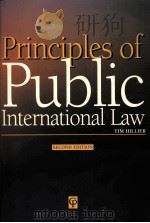
- PRINCIPLES OF PUBLIC INTERNATIONAL LAW SECOND EDITION
- 1999 CAVENDISH PUBLISHING LIMITED
-
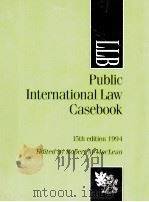
- Public international law caseboo
- 1994 HLT publications
-
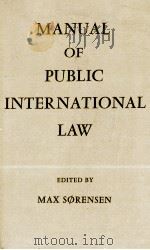
- MANUAL OF PUBLIC INTERNATIONAL LAW
- 1968 THE MACMILLAN PRESS LTD
-

- ENCYCLOPEDIA OF PUBLIC INTERNATIONAL LAW 10
- 1987 NORTH-HOLLAND
-
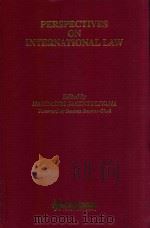
- Perspectives on International Law
- 1995 Kluwer Law International
-

- SOURCEBOOK ON FRENCH LAW SECOND EDITION
- 1996 CAVENDISH PUBLISHING LIMITED
-
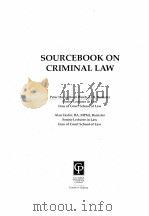
- SOURCEBOOK ON CRIMINAL LAW 2
- 1997 CAVENDISH PUBLISHING LIMITED
-
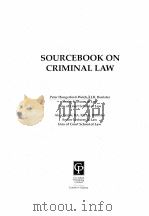
- SOURCEBOOK ON CRIMINAL LAW 1
- 1997 CAVENDISH PUBLISHING LIMITED
-
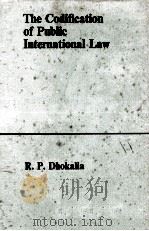
- THE CODIFICATION OF PUBLIC INTERNATIONAL LAW
- 1970 MANCHESTER UNIVERSITY PRESS
-
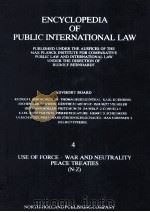
- ENCYCLOPEDIA OF PUBLIC INTERNATIONAL LAW 4
- 1982 NORTH-HOLLAND PUBLISHING COMPANY
-

- ENCYCLOPEDIA OF PUBLIC INTERNATIONAL LAW 3
- 1982 NORTH-HOLLAND PUBLISHING COMPANY
-
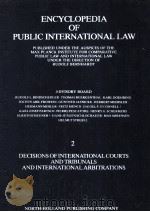
- ENCYCLOPEDIA OF PUBLIC INTERNATIONAL LAW 2
- 1981 NORTH-HOLLAND PUBLISHING COMPANY
-
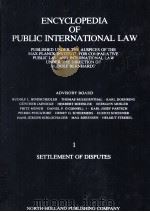
- ENCYCLOPEDIA OF PUBLIC INTERNATIONAL LAW 1
- 1981 NORTH-HOLLAND PUBLISHING COMPANY
-
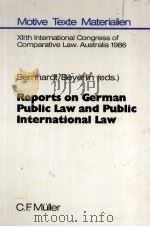
- REPORTS ON GERMAN PUBLIX LAW AND PUBLIC INTERNATIONAL LAW
- 1986 C.F.MULLER JUISTISCHER VERLAG
提示:百度云已更名为百度网盘(百度盘),天翼云盘、微盘下载地址……暂未提供。➥ PDF文字可复制化或转WORD
